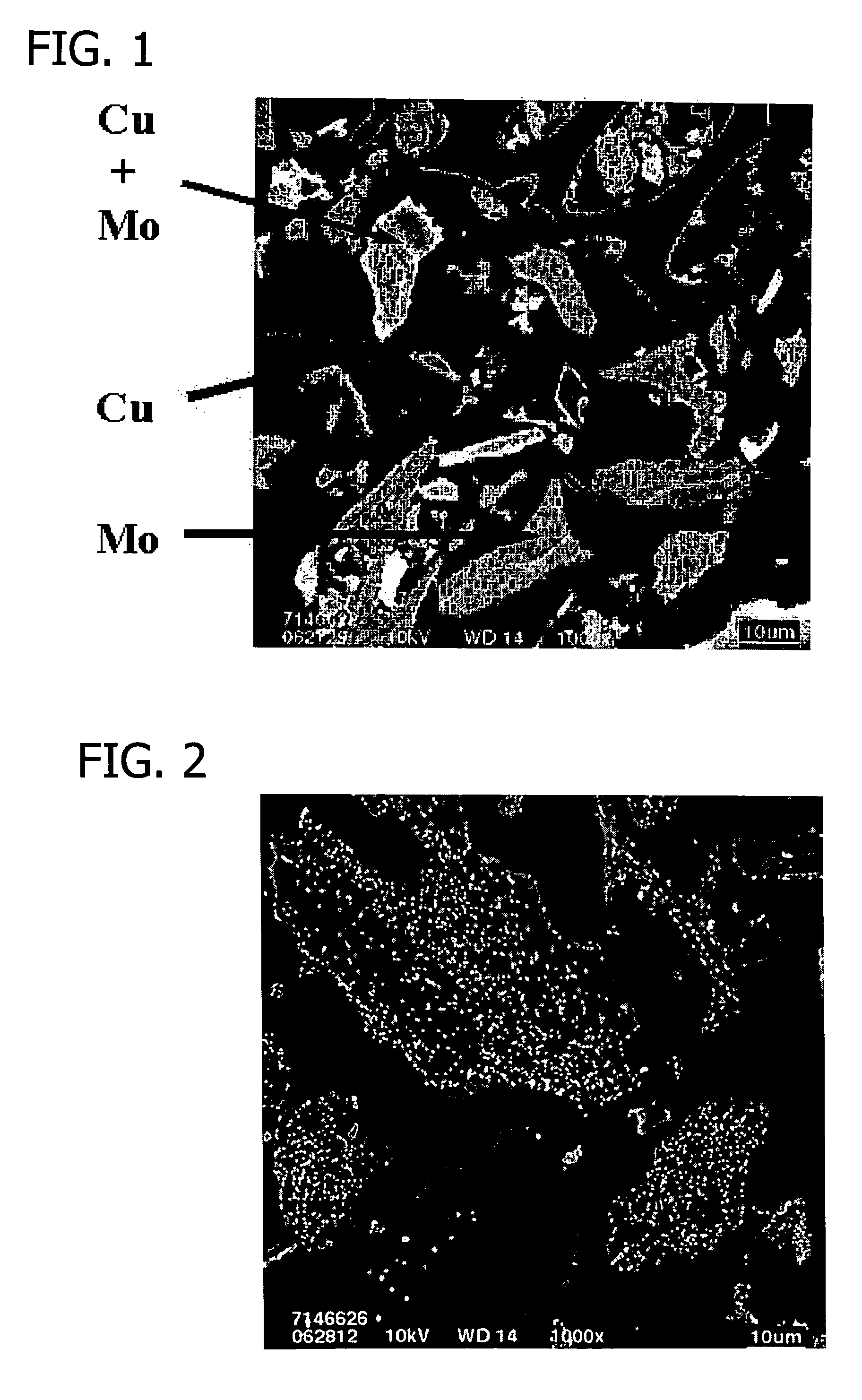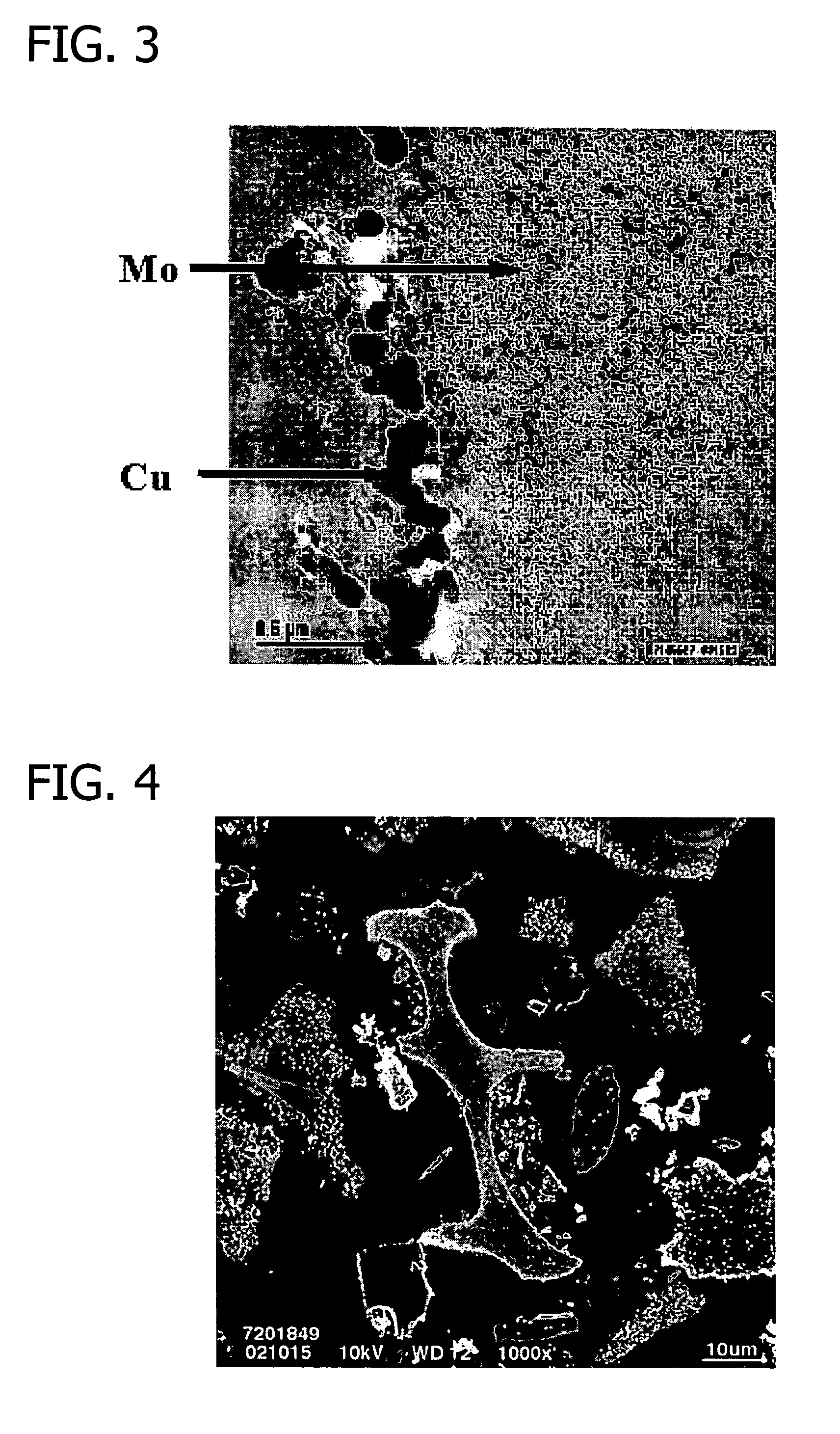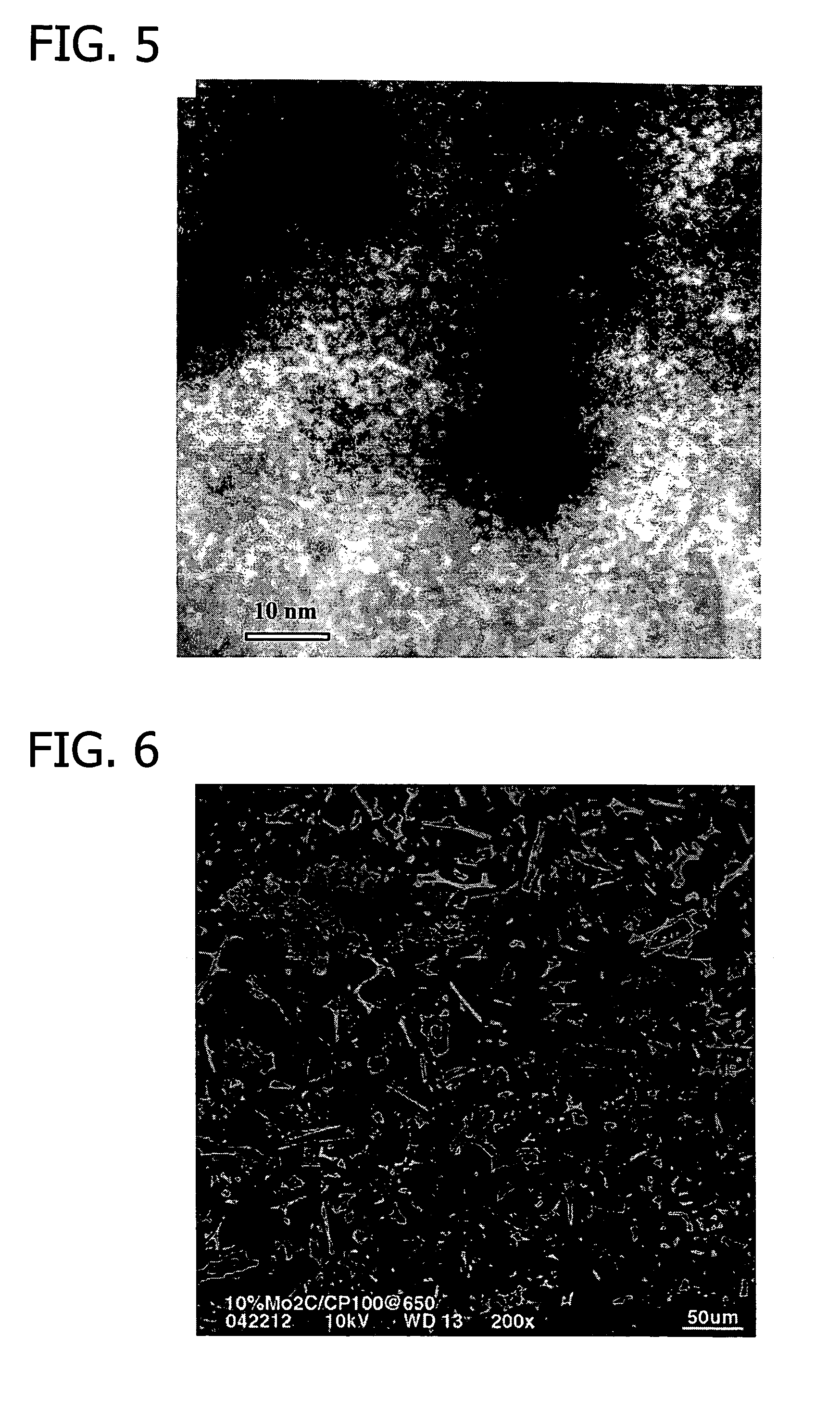Transition metal-containing catalysts and processes for their preparation and use as oxidation and dehydrogenation catalysts
a technology of transition metal and catalyst, which is applied in the field of heterogeneous catalysis, can solve the problems of high loss of costly noble metal into the reaction solution, undesirable formaldehyde by-product, and undesirable formaldehyde by-produ
- Summary
- Abstract
- Description
- Claims
- Application Information
AI Technical Summary
Benefits of technology
Problems solved by technology
Method used
Image
Examples
example 1
Electroless Copper Plating on Bulk Metal Carbides and Nitrides
[0364]This example details electroless copper plating on bulk metal carbides and nitrides.
[0365]Bulk molybdenum carbide (20.0 g) (Aldrich Chemical Co., Milwaukee, Wis.) was added to a 2 l flask containing deionized water (200 ml) and a magnetic stirring bar to form a slurry.
[0366]A copper plating solution was prepared by adding reagent grade sodium potassium tartrate (NaKC4H4O6.4H2O) (29.99 g) (Aldrich Chemical Co., Milwaukee, Wis.), copper sulfate (CuSO4.5H2O) (11.79 g) (Aldrich Chemical Co., Milwaukee, Wis.), a 50 wt. % solution of sodium hydroxide (NaOH) (13.60 g) (Aldrich Chemical Co., Milwaukee, Wis.) and 37 wt. % formaldehyde (CH2O) (11.35 ml) (Aldrich Chemical Co., Milwaukee, Wis.) to deionized water (950 ml) to form approximately 1 liter of plating solution in a 2 liter flask.
[0367]Plating solution was added to the carbide slurry incrementally over the course of about 40 minutes with approximately 60 ml of the pla...
example 2
Synthesis of a Precursor for Use in Preparing Carbon-Supported Molybdenum Carbides (Mo2C / C) and Carbon-Supported Molybdenum Nitrides (Mo2N / C)
[0370]This example details the preparation of a precursor for use in preparing carbon-supported molybdenum carbides and nitrides.
[0371]A carbon support (20.0 g) having a B.E.T. surface area of 1067 m2 / g (Degussa Corporation) was added to a 1 l beaker containing deionized water (300 ml) and a magnetic stirring bar to form a slurry.
[0372]A solution (60 ml) containing ammonium molybdate ((NH4)2MoO4) (4.236 g) (Aldrich Chemical Co., Milwaukee, Wis.) in deionized water was added to the carbon slurry using a MasterFlex® meter pump (MasterFlex® L / S®) manufactured by Cole-Parmer Instrument Company (Vernon Hills, Ill.). The slurry was agitated by a mechanical stirrer while the molybdenum solution was added to the carbon slurry at a rate of 2.0 ml / min over the course of about 30-40 minutes. During addition of the molybdenum solution to the carbon slurry,...
example 3
Synthesis of Carbon-Supported Molybdenum Carbide Containing 15% by Weight Molybdenum Carbide (15% Mo2C / C)
[0375]This example details preparation of a carbon-supported molybdenum carbide using a carbon-supported molybdenum carbide precursor prepared in accordance with the procedure set forth above in Example 2.
[0376]The carbide precursor (8.0 g) was charged into a Hastelloy C tube reactor packed with high temperature insulation material which was purged with argon introduced to the reactor at 100 cm3 / min at about 20° C. for approximately 15 minutes. A thermocouple was inserted into the center of the reactor for charging of the precursor material.
[0377]The temperature of the reactor was then raised to about 300° C. over the course of 30 minutes during which time a 50% / 50% (v / v) mixture of methane and hydrogen (Airgas Co., St. Louis, Mo.) was introduced to the reactor at a rate of about 100 cm3 / min.
[0378]The temperature of the reactor was then increased to approximately 650° C. at a rat...
PUM
| Property | Measurement | Unit |
|---|---|---|
| particle size | aaaaa | aaaaa |
| particle size | aaaaa | aaaaa |
| particle size | aaaaa | aaaaa |
Abstract
Description
Claims
Application Information
 Login to View More
Login to View More - R&D
- Intellectual Property
- Life Sciences
- Materials
- Tech Scout
- Unparalleled Data Quality
- Higher Quality Content
- 60% Fewer Hallucinations
Browse by: Latest US Patents, China's latest patents, Technical Efficacy Thesaurus, Application Domain, Technology Topic, Popular Technical Reports.
© 2025 PatSnap. All rights reserved.Legal|Privacy policy|Modern Slavery Act Transparency Statement|Sitemap|About US| Contact US: help@patsnap.com



